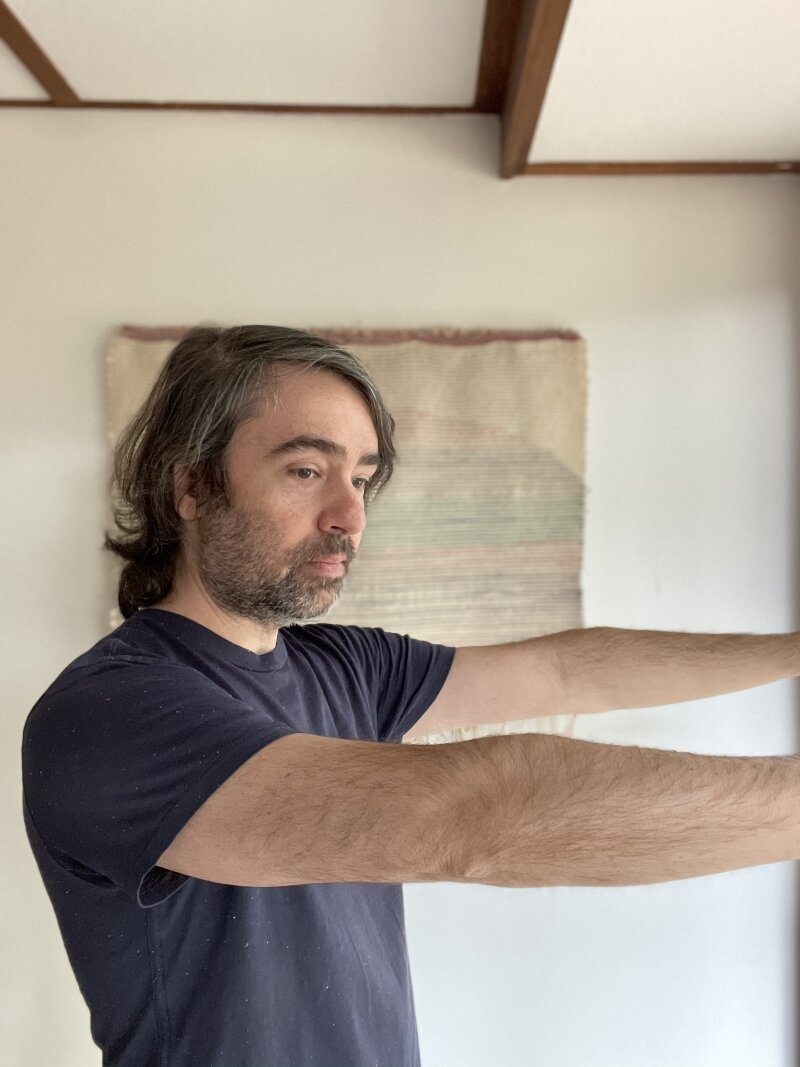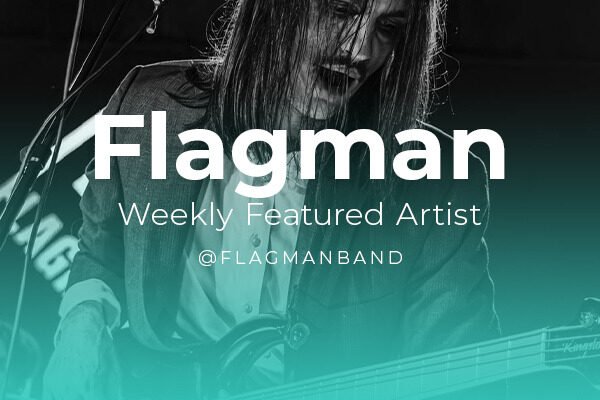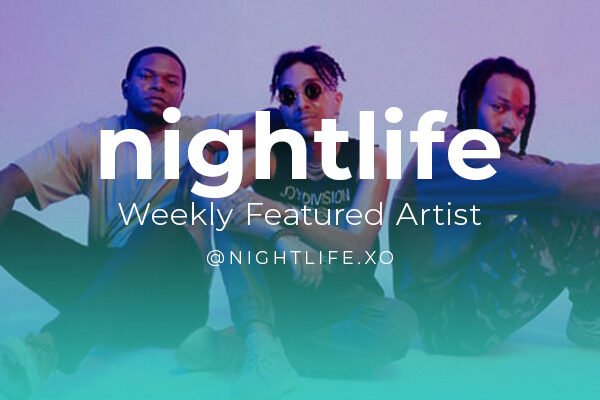I went through a Weezer renaissance midway through my junior year of high school that — having grown out of the appreciation for their post-Maladroit material I had during middle school — led me on a desperate search for anything that could fill the woid inside of me when their glorious first four albums proved to be insufficient. That road first led me to Weezer-adjacent The Rentals and Weezer-inspired Ozma (two great bands in their own right), before ending at ’90s alt-rock band that dog.. I quickly became obsessed with them, to the point that the bass-line to their 1995 song “He’s Kissing Christian” is the one thing I learned to play as a teenager that my brain somehow refuses to forget. What transfixed me so much about their music, especially on their first two records, was how weird they were — not experimental, weird — and how, to this day, no one in rock music nails a three-part harmony quite as charmingly as Anna Waronker and triplets Petra and Rachel Haden. What had begun as a search for more Weezer eventually transformed into a search for more that dog.. But unlike my previous quest, which hadn’t led me astray of the rock confines I began from, a Rachel Haden feature on LA-based electronic artist Jimmy Tamborello’s debut album as Dntel, Life Is Full of Possibilities, opened my eyes to the possibilities laying outside my musical comfort zone (no, dear reader, this WFA article is surprisingly not about that dog.).
Life Is Full of Possibilities was an absolute eye-opener for me, as the music I had listened to up to that moment — be it rock, pop, metal or punk — was for the most part very direct and channeled, and whose tools I was deeply familiar with — your classic guitar, bass, drums —. But Life… was vast and unknown with its glitchy and stuttering beats, its varied textures, its melancholy momentum, and its brilliant juxtaposition of experimental electronica with ‘indie vocals’; it was like facing the ocean having only rivers to compare it to, and though I was tentative at first, I eventually took the plunge. The album also happened to come to me at a pivotal moment in my personal and emotional development, as I was finally letting go completely of my first girlfriend — with whom the relationship had been childish, explosive, and noxious — and getting to know who would become the first love of my live, and Life.. became one of the musical reference points of our burgeoning love, so to this day I feel an extra powerful wave of warmth cover me when I listen to these songs. Few albums have have shaped my musical panorama quite as much as Life Is Full of Possibilities, and it continues to shape my taste in electronic and ambient music.
Jimmy’s body of work as Dntel is extensive and excellent, and he has also released music with projects such as Strictly Ballroom, Figurine, Sana Shenai, and, perhaps most famously, The Postal Service. I felt, therefore, that a career-spanning article could feel too wide in scope, and decided to focus on just one album, the first one, my favorite of his and one of my favorites of all time. I never thought I’d have the chance to talk with Jimmy, so I was ecstatic when he agreed to answer some questions to help me write this piece. Ecstatic and quite nervous, although those nerves were quickly assuaged by his calm and down-to-earth demeanor so apparent in his answers. I was particularly curious about the album’s conception and production, the many collaborations on the album, and what Life… means to him more than 20 years after its release, as well as how his musical journey led to Dntel in the first place. So that’s where we started, at the beginning:
‘My dad has always played sax and flute, and around when I was in junior high he bought some studio gear to make his own music. This included a Roland D-50 keyboard, an R8 drum machine, a sequencer and an 8 track cassette recorder. My friends and I were starting to get really into listening to music and we realized we could make our own with this little home studio setup. That became one of our main after school activities all the way through high school, making up bands, playing shows and recording stuff. We were listening to a lot of techno pop like Depeche Mode, New Order, Pet Shop Boys, and whatever alternative rock stuff was going on at the time (89/90-ish). In high school I got really into industrial music, so a lot of the music we were making was in that style. By the end of high school I was also getting into more ambient and dance music like the Orb and Aphex Twin.‘
Tamborello started Dntel after high school in an effort to continue making music after his previous project, Antihouse, separated after both members moved away to different colleges, both sharing an ambient-leaning influence as a throughline. During the ’90s, Tamborello was also a part of two very different bands, Figurine and Strictly Ballroom, where he was able to flex his creative muscles in different ways than on in his solo work, which he continued to work on in his free time. Members of both these bands would end up featuring on Life….
‘Figurine started just out of high school with two high school friends. In the beginning it was kind of a joke, trying to make a fake 80s european techno pop band. It grew into a slightly more serious band, we stopped trying to sound retro for our second album, although we kept doing fake accents. We played a few shows in LA and did a small German tour in 2000 but it was mostly just a recording project.
‘Strictly Ballroom happened a year or two later with college friends in Los Angeles. My younger brother, who was still in high school, was in the hardcore scene in Santa Barbara, playing in bands and going to shows. He got me into that world and eventually my friends and I started Strictly Ballroom. It started as a very screamy emo band but by the end we had two drummers and were incorporating more electronics. We played a lot in Los Angeles and nearby cities but only played a few shows outside of California.‘
After releasing a collection of instrumental Dntel tracks (Early Works for Me If It Works for You) on Phthalo and upgrading to a computer with enough hard drive space to record vocal tracks instead of having to sample bits of vocals and play them off his sampler, Tamborello started to make vocal tracks on his own. His main interest at the time was ‘mixing more indie-centric vocals with experimental electronics, something that was still pretty rare back then‘.
‘Allen Avenessian from Plug Research invited me to contribute to a compilation called Voices In My Lunchbox that had a similar goal of combining experimental electronics and vocals. I made a song for that and then he asked if i could do a whole album for the label, and that became Life Is Full Of Possibilities. There were a lot of things influencing me, Timbaland’s beats, Chicago and UK post rock sounds, the new indie-tronic stuff going on at labels like Morr Music, emo and indie rock stuff…
The album’s 10 tracks are perfectly balanced, with 5 instrumentals and 5 featuring vocals, every one of them a unique and enthralling exploration of texture, mood, dynamics and emotion. Jimmy was mainly using a Kurzweill K2000 sampler/synth, controlled by Cubase on his computer, aided by a Nord Modular and some effects racks, and the width and depth of sound and feeling he commands on Life… never ceases to amaze me; it’s actually always surprised me that the album isn’t more widely celebrated, because it feels like such a monument. From the very beginning, on album opener “Umbrella”, Dntel‘s grip on the listener is unyielding: with its glitchy opening lines, courtesy of Strictly Ballroom‘s Chris Gunst, gradually surrounded by a sweet, deep bassline, crackling electronics that sound like shattering glass, the song flows into a quiet middle section, the calm before the storm as it swells into a magnificent ending, a simple and constant beat the backbone for ethereal vocals and synth that eventually dissipate. Follow-up “Anywhere Anyone”, featuring folk artist Mia Do Todd, is another emotionally gripping track, a slow-burner that eventually incorporates warmth synth and jittery beats to the songs initial airiness, before Tamborello treats us to two vastly different instrumental numbers, the tranquil ambience of “Pillowcase” leading to the oddly threatening and angular beat on “Fear of Corners”.
Other than Gunst and Doi Todd, Life features collaborations from Meredith Figurine on the quietly tragic “Suddenly Is Sooner Than You Think”, Paul Larson (also of Strictly Ballroom) adding guitar to closing track “Last Songs”, Rachel Haden and Brian McMahan (of Slint fame) on “Why I’m So Unhappy”, and Ben Gibbard of Death Cab for Cutie on the hit “This Is the Dream (Of Evan and Chan)”, which led to the duo joining forces as The Postal Service. But even though not every collaboration lead to an offshoot project, they each endow the record with one amazing performance after the other. Perhaps given that they were all somewhat known to Tamborello, there is also a palpable feeling of intimacy to their songs.
‘I met Rachel through Brian McMahan, who played guitar on “Why I’m So Unhappy”. I tried out to play bass in his band The For Carnation a year or two before, and we ended up becoming friends even though I didn’t end up in the band. I think at first I asked him to work on a song for my album on his own but then he brought in his friend Rachel to sing the song. I was a fan of hers and was excited to have her involved! Mia Doi Todd was a Los Angeles musician who was making records on a friend’s label, I think that’s how we became friends. Her music at the time was very stripped down folk, it seemed exciting to put her voice into such a different context. I remember making “Anywhere Anyone” with [her] first, and then using that as the blueprint for the rest.
‘It’s been so long I don’t remember many details about the creative process. There was no deadline, I was just messing around with stuff until songs formed, and I worked mostly with friends that I knew through the LA music scene. I wasn’t doing a lot of reaching out to strangers to ask them to sing on songs. I think Ben Gibbard was the closest to that, but even with him we had mutual friends. I’m pretty socially awkward, I usually avoid the added stress of working with strangers if I can.‘
I come back to Life Is Full of Possibilities often. At the best of times, it is simply a rich and rewarding listen, a calm journey through beautiful glitched soundscapes. When I’m feeling less than stellar, Life… is tremendously reassuring and uplifting, an hour-long meditation that helps me feel more connected to myself and to the world around me. My dad sold the 1998 Chevy Caravan that had belonged to my grandparent last year, where I listened to Life… on my way to my second date with my first love more than a decade ago. But every time I listen to this special record, I can picture the inside of that car that meant so much to me, flooded through all its windows by a blinding light, the blinding light of all possibilities. There are few records where I find myself held as tenderly as I do in Dntel‘s 2001 unsung masterpiece, and through changes in taste it has remained one of my absolute favorites. Jimmy, unsurprisingly, is also quite fond of his debut: ‘I think it’s still my favorite Dntel album. It captures my essence better than anything else i’ve made. I use it as a blueprint and a reference when i make a new album. There are details about every song that I’m still proud of so it’s hard to pick a favorite.‘
In terms of any shoutouts, Jimmy’s made it easy for us: ‘I do a radio show on Dublab.com called Dying Songs every thursday. It focuses on new weird electronic music, I recommend everything I play there!‘
Follow Jimmy Tamborello on Instagram and Twitter. Buy or listen to his music on Bandcamp.






